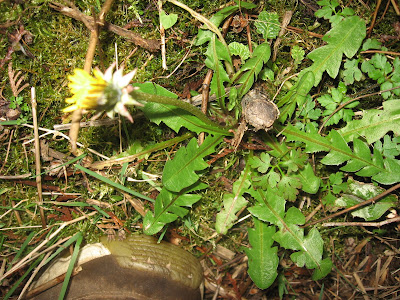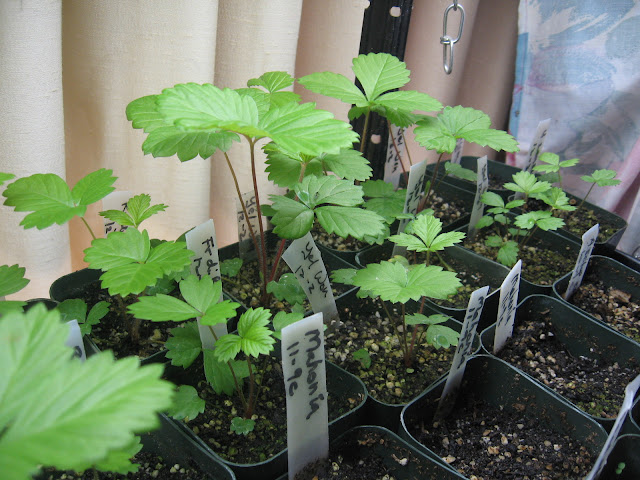A festive small orchid, Maxillaria sanguinea, is enchanting at this time of year in a west-facing window-
The lovely Oxalis triangularis is also in bloom, early. The Purple Shamrock is a tuber, and very tough. If the tubers are not watered in the winter, the tops die back and it makes it easier to divide them after they have increased. Otherwise they do fine all year.
heathers blooming at other times of the year. The Hellebores are reliably one of the winter bloomers, this is Helleborus orientalis, the Lenten Rose, which have been hybridized into a wide range of colors and spotted and double forms.
A very small inconspicuous but very fragrant white flower is on Sarcococca ruscifolia
And finally, wouldn't you know, the irascible dandelion.
On to another matter, the winter antics of my arch enemies, the voles. I left a large piece of plastic on the lawn hoping to dry it out and put it away, which didn't happen, but it stayed there a long time and the lawn was converted into a vole amusement park-
Our lawn abounds in moss so the voles can freely create lots of surface runs-
Some new strategies I'm planning this year are to interplant some nightshade family plants in with my bush beans to make them less palatable to voles. I will try eggplants and peppers in the ground for the first time, usually they are in pots. I'm also trotting out many old determinate seeds and attempting to start them. Some will, some won't.
Another strategy is to use higher levels of lava rock in the planting holes, which has saved many daylily plants from being eaten. Also, I will use some hardware cloth in some holes to keep the voles away.
Well, have a nice restful remainder of the winter, and peruse those catalogs and internet sites for your plants to grow this year.
Hannah










